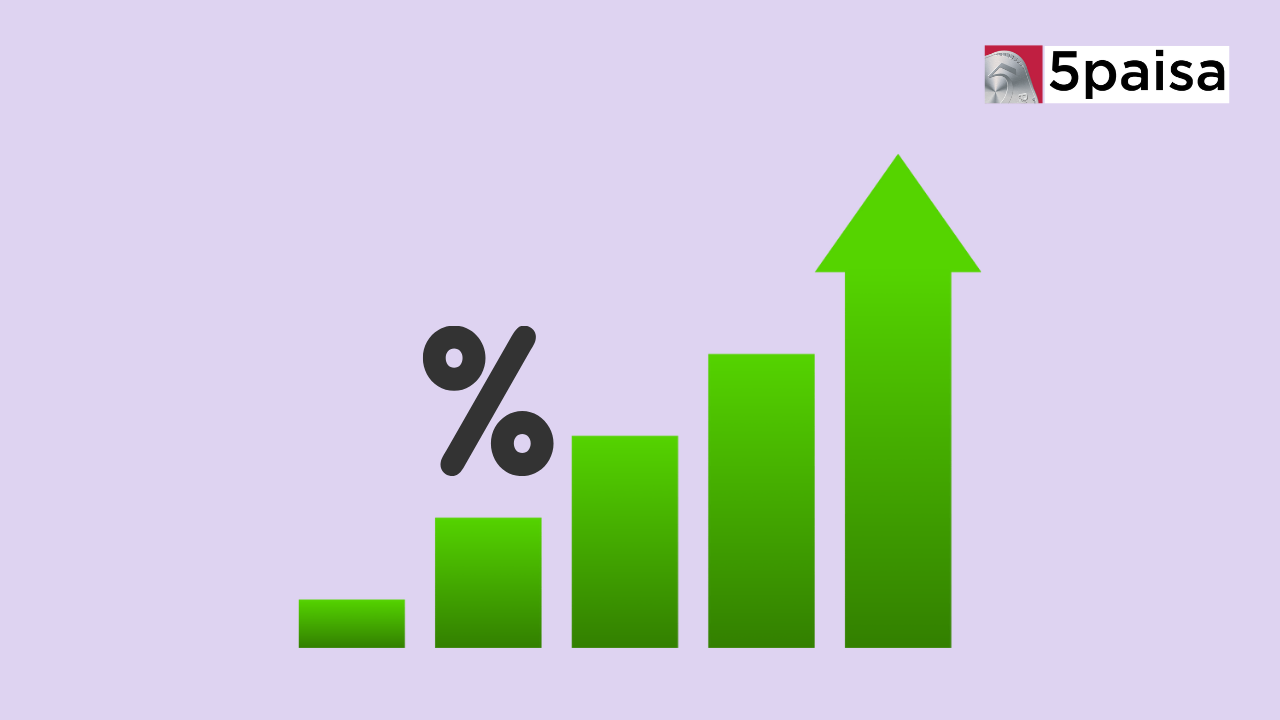Top Growth Stocks Trading at a Discount
Top Aviation Stocks in India

Last Updated: 7th September 2023 - 05:09 pm
India is one of the nations with the fastest-growing aviation markets due to the country's rapidly expanding middle class and rising standard of living.
The government's initiatives to assist the sector and the rising demand for air travel are the main reasons why aviation stocks are becoming more and more popular in India.
As a result, numerous airlines and companies working in the Indian aviation sector have seen a sharp rise in their airline stocks over time.
Key Factors to Evaluate Before Investing in India's Aviation Sector Stocks
For potential investor eyeing opportunities in Indian aviation stocks, it's important to recognize the potential these investments hold. However, prudent decision-making demands careful consideration of several pivotal aspects when delving into the realm of airline stocks within the Indian aviation landscape.
• Financial Health Assessment:
Prior to making any investment commitment, a comprehensive evaluation of the financial performance of the aviation company is paramount. This encompasses a comprehensive analysis of key indicators, encompassing ascending revenue trends, profit margins, debt ratios, and the fluidity of cash flow. Furthermore, the historical performance of the company should be examined to gauge the consistency of its profitability over time.
• Competitive Market Position:
An aviation enterprise's market share serves as a barometer of its competitiveness within the sector. Thus, comprehending the company's relative standing vis-à-vis its peers necessitates a thorough examination of its market share, allowing for a calibrated assessment of its industry positioning and competitive clout.
• Navigating Regulatory Landscape:
The aviation industry operates under the aegis of stringent regulations, and modifications to these statutes can wield significant influence over both the sector and its constituent entities. Hence, investors are well-advised to remain vigilant about potential regulatory shifts and their potential impact on the business landscape.
• Macro-Economic Influence:
The overall health of the nation's economy is a substantial determinant of the aviation sector's performance. Consequently, investors must factor in the prevailing economic milieu in India, considering parameters such as GDP growth, inflation trends, and prevailing interest rates, as these variables can notably sway the sector's trajectory.
• Embracing Industry Dynamics:
A nuanced comprehension of prevailing industry trends and advancements is pivotal for prudent investment decisions. Staying attuned to shifts in technology, evolving consumer preferences, and competitive dynamics equips investors with the acumen needed to make astute choices, thereby enhancing the prospects of their investments.
These Key ratios help investors assess various aspects of a company's operations, profitability, efficiency, and leverage. Here are some of the most important financial ratios to consider:
• Profitability Ratios:
Gross Profit Margin: This ratio indicates the proportion of revenue that remains after deducting the cost of goods sold and reflects a company's ability to manage production costs.
Net Profit Margin: This ratio measures the percentage of each dollar of revenue that translates into net income, reflecting overall profitability.
Return on Equity (ROE): ROE measures the company's ability to generate profits from shareholders' equity, providing insight into management's efficiency in utilizing equity investments.
• Liquidity Ratios:
Current Ratio: This ratio compares current assets to current liabilities and assesses a company's short-term liquidity and ability to meet its obligations.
Quick Ratio (Acid-Test Ratio): This ratio considers only the most liquid assets (cash, marketable securities, and accounts receivable) relative to current liabilities, offering a more stringent measure of short-term liquidity.
Debt and Leverage Ratios:
Debt-to-Equity Ratio: This ratio indicates the proportion of debt to equity in a company's capital structure, providing insights into its financial leverage and risk exposure.
Interest Coverage Ratio: This ratio assesses a company's ability to cover interest expenses with its operating income, indicating its ability to service debt obligations.
• Efficiency Ratios:
Asset Turnover Ratio: This ratio measures how efficiently a company uses its assets to generate sales, indicating its operational efficiency.
Inventory Turnover Ratio: This ratio assesses how well a company manages its inventory by measuring the number of times inventory is sold and replaced within a period.
• Earnings Per Share (EPS) and Price-to-Earnings (P/E) Ratio:
Earnings Per Share: EPS represents the portion of a company's profit allocated to each outstanding share of common stock.
Price-to-Earnings Ratio: P/E ratio compares the market price of a company's stock to its earnings per share, indicating how much investors are willing to pay for each dollar of earnings.
• Cash Flow Ratios:
Operating Cash Flow Ratio: This ratio assesses a company's ability to generate cash from its core operations, which is crucial for ongoing business activities.
Free Cash Flow: Free cash flow reflects the amount of cash generated after accounting for capital expenditures necessary to maintain or expand the business.
• Return on Assets (ROA):
ROA measures a company's ability to generate profits from its total assets, providing insight into its efficiency in asset utilization.
Overview of the Best Aviation Companies in India
1. Interglobe Aviation Ltd (Indigo)
Key Operational Highlights:
1. Revenue and Performance: IndiGo (InterGlobe Aviation) achieved a record-breaking quarter, with all-time high revenue and profit after tax (PAT) of ₹ 166.8 billion and ₹ 30.9 billion, respectively. The company's robust financial performance was attributed to a strong load factor of 88.7%, surpassing the projected 88.0%, and a favourable yield of ₹ 5.1 per unit.
2. Operational Efficiency and Cost Management: IndiGo witnessed a notable 26.6% year-on-year decline in fuel cost per available seat kilometer (CASK), reaching ₹ 1.6. This reduction was driven by falling crude oil prices during the period. Improved efficiency was reflected in the EBITDAR margin of 31.0%, bolstered by the decline in fuel CASK, steady yield, and a surge in passenger traffic.
3. Profitability and Sustainability: The company recorded a significant turnaround in its financial performance, reporting a record profit of ₹ 30.9 billion for the quarter. This marked the third consecutive profitable quarter, as opposed to a loss of ₹ 10.6 billion in the corresponding quarter of the previous fiscal year.
IndiGo sustained its profitability through prudent cost management and capitalizing on a steady yield amid challenging market conditions.
4. Capacity and Expansion Strategy: Despite facing engine-related issues at Pratt & Whitney (P&W), IndiGo maintained its FY24 capacity deployment guidance of north of mid-teens growth, showcasing the company's resilience and strategic planning.
The airline is geared for further expansion, with plans to increase capacity ASKM (Available Seat Kilometre) by 25% year-on-year in the upcoming second quarter.
5. Investment and Innovation: Leveraging its robust financial position with ₹ 157 billion of free cash, IndiGo is actively considering investments in aircraft and related assets, signalling a strategic approach towards enhancing its fleet and operational capabilities.
Outlook:
1. Capacity and Growth Prospects: IndiGo remains committed to its capacity expansion plans, projecting sustained growth with capacity guidance for FY24 exceeding mid-teens levels. The company is poised to capture a larger share of the market, aiming to serve 100 million passengers in FY24, highlighting its ambitious growth trajectory.
2. Operational Diversification and Innovation: Beyond traditional aviation operations, IndiGo is venturing into innovation with the launch of a venture capital (VC) arm. This arm will target investments in sector₹ such as aviation, travel, and hospitality, showcasing the company's drive for diversification and forward-looking strategies.
3. Technical Considerations: IndiGo's decision to power all new aircraft with CFM engines mitigates the risk associated with potential complications from P&W engines, emphasizing the company's commitment to operational reliability.
4. Market Position and Strategy: IndiGo's strategy remains aligned with maintaining a substantial share of international Available Seat Kilometre₹ (ASK) at 30%, underscoring the company's global market presence and its balanced approach to domestic and international operations.
|
Key Ratios |
As of FY'23 |
|
Compounded Sales Growth (TTM) (%) |
63 |
|
Gross Profit Margin (%) (Q3) |
68.23 |
|
Operating Profit Margin (%) (Q3) |
29.78 |
|
Net Profit Margin (%) (Q3) |
18.51 |
|
Asset Turnover Ratio |
0.92 |
|
EV/EBITDA |
16.1 |
|
Mcap/Sales |
1.7 |
|
P/E |
25 |
Interglobe Aviation Ltd (Indigo) Share Price
2. Spice Jet Ltd
Key Operational Highlights:
1. Cargo Revenue Growth and Margin Improvement: Cargo revenues exhibited a robust growth of 13.5% quarter-on-quarter (QoQ), contributing to an overall improvement in revenue dynamics. The cargo business demonstrated promising margins, with a margin of 6.4%, showcasing resilience amid challenging market conditions.
2. Compensation from Boeing and Cargo Unit Restructuring: The company successfully secured compensation of ₹ 1.4 billion from Boeing for the Boeing 737 Max grounding, enhancing its financial position.
In a strategic move, the decision to hive off the cargo arm on a slump sale basis for ₹ 25.5 billion was undertaken, with the aim of streamlining operations and unlocking additional capital.
3. Industry Recovery and Capacity Projections: The company's outlook for the industry anticipates a gradual recovery, as lockdown restrictions ease and vaccination efforts gain momentum.
4. Focus on Financial Resilience and Cost Management: The company proactively managed its financial health through a series of measures, including rent and maintenance cost renegotiations, deferral of payments to vendors, and capital raising via QIP and the cargo unit divestiture.
The utilization of the Emergency Credit Line Guarantee Scheme (ECLGS) facilitated an infusion of ₹ 1.3 billion, further enhancing liquidity.
5. Future Prospects and Boeing Negotiations: SJET projects its operations to gradually recover, with an estimated capacity utilization of 49% in FY22 and 97% in FY23, indicating a cautious yet optimistic stance. The company's negotiations with Boeing regarding compensation for the grounding of Boeing 737 Max remain a pivotal consideration for its financial trajectory.
Outlook:
1. Cargo Business Growth and Strategic Divestiture: SJET's focus on the cargo business is poised to intensify through the strategic divestiture of its cargo arm, aiming to enhance operational efficiency and unlock capital for growth.
The intended restructuring underscores the company's commitment to adapt and optimize its business model in response to changing market dynamics.
2. Operational Recovery and Industry Resilience: With lockdown restrictions gradually easing and a steady increase in vaccination efforts, the aviation industry is anticipated to regain momentum, potentially driving passenger demand and revenue growth. SJET's measured approach aligns with industry expectations for a phased resurgence, underscoring its adaptability and resilience.
3. Financial Position and Liquidity Management: The company's financial position benefits from the compensation received from Boeing, as well as its concerted efforts to manage cash flows, renegotiate costs, and raise capital through strategic avenues.
The successful execution of these initiatives is anticipated to alleviate liquidity constraints and provide a solid foundation for sustainable growth.
4. Capacity Reclamation and Business Viability: The gradual capacity recovery projections for FY22 and FY23 reflect SJET's pragmatic approach to reclaiming operational scale while navigating uncertainties.
The outcome of ongoing negotiations with Boeing and the ability to harness new capital sources will significantly influence the company's ability to strengthen its business viability.
5. Strategic Agility and Adaptation: SJET's decision to reorient its business model through the cargo arm divestiture exemplifies its strategic agility and commitment to adapting to the evolving aviation landscape.
By aligning its operations with emerging opportunities and market demands, SJET seeks to position itself for sustained growth and competitiveness.
|
Key Ratios |
As of FY'23 |
|
Compounded Sales Growth (TTM) (%) |
31 |
|
Gross Profit Margin (%) (Q3) |
49.92 |
|
Operating Profit Margin (%) (Q3) |
-2.57 |
|
Net Profit Margin (%) (Q3) |
4.62 |
|
Asset Turnover Ratio |
0.75 |
|
EV/EBITDA |
-27 |
|
Mcap/Sales |
0.2 |
|
P/E |
-- |
Spice Jet Ltd Share Price
Aviation Sector in India
Robust Demand
1. Rising working group and widening middle-class demography is expected to boost demand.
2. Country will become the third-largest aviation market in terms of passengers by 2024.
Possibilities in MRO
1. The MRO sector is anticipated to increase from US$800 million in 2018 to US$2.4 billion by 2028.
2. The government wants to turn India into a "Global MRO Hub," hence land allocation for companies building MRO facilities in India has been changed from the existing 3-5 years to a term of 30 years starting in September 2021.
Policy Support
1. Under the automatic approach, foreign investment is permitted up to 49%.
2. The government reduced the customs duty on parts or components, including engines, used in the production of aircraft by public sector entities of the Ministry of Defence from 2.5% to 0% under Union Budget 2021–22.
Increasing Investment
1. Investment to the tune of ₹ 420-450 billion (US$ 5.99-6.41 billion) is expected in India’s airport infrastructure between FY18-23.
2. Growing private sector participation through the Public-Private Partnership (PPP).
Conclusions
The growth potential of the Indian aviation sector is substantial, driven by key factors such as the expanding middle-class demographic, increasing disposable incomes, and proactive governmental support.
Consequently, companies like InterGlobe Aviation (IndiGo), SpiceJet, prominent participants within this sector, present intriguing opportunities for investors seeking exposure to India's aviation domain.
However, prudent investment necessitates the consideration of multiple variables. It is imperative for investors to exercise due diligence while acknowledging the inherent risks associated with the aviation industry, encompassing currency fluctuations, the volatility of fuel prices, and the potential impact of alterations in regulations and policies.
Trending on 5paisa
Discover more of what matters to you.
Indian Stock Market Related Articles
Disclaimer: Investment in securities market are subject to market risks, read all the related documents carefully before investing. For detailed disclaimer please Click here.
 5paisa Research Team
5paisa Research Team Sachin Gupta
Sachin Gupta




